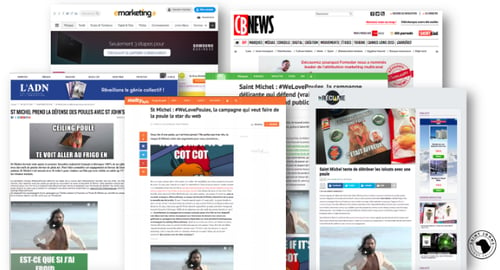The Essential Social Media KPIs for Improving an Agency's Campaign Performance
How one agency planned a successful campaign by analyzing social media KPIs.
When marketing and communication agencies plan and design a campaign, the most fundamental questions they have to answer aren’t creative or operational in nature; they’re strategic. What are the most relevant KPIs for the campaign? How can the campaign's strategy achieve alignment with the needs of the target audience while meeting customer business goals?
Answering these questions is difficult for three reasons:
- It’s difficult for stakeholders to monitor a large audience, so they’re forced to listen to anecdotal evidence on third-party platforms.
- The KPIs are diverse and multifaceted and require a process of selection, classification, and analysis.
- Without careful measurement, ROI metrics can be easily distorted.
To demonstrate how one of our customers overcame these challenges, here is a case study following a successful campaign of the St. John’s agency. The study demonstrates how KPIs from past campaigns helped to inform the marketers’ planning, and how the results yield important and translatable takeaways for subsequent campaigns.
The agency
St. John's is an agency which specializes in comprehensive approaches to PR, community management, social media marketing, and branded content management for both strategic and operational brands. The team has carried out many successful campaigns, but in collaborating with one of their top clients, they found themselves facing a large social media related challenge.
The challenge
One of St. John’s top clients, the St. Michel brand, embarked on an ambitious rebranding effort which required a huge volume of communication and a corresponding commitment to listening to and understanding the results.
At the outset of the project, St. John’s intended to:
- Modernize the company’s image.
- Reach new consumer demographics.
- Establish the brand as a leader in corporate social responsibility and sustainability.
 A collection of customer social media engagement surrounding St. Michel's campaign.
A collection of customer social media engagement surrounding St. Michel's campaign.
The project
In 2015, St. Michel became the first French biscuit maker to manufacture 100% of its products using cage-free eggs. St. John’s sought to capitalize on this advantage by highlighting the brand’s ability to satisfy consumers while simultaneously representing a conscientious consumer choice.
The agency kicked off planning the campaign by analyzing previous food & beverage campaigns from comparable brands outside of the agency's portfolio. During this phase, they used Digimind Social to identify KPIs and insights into critical issues which were relevant in those campaigns. The findings included:
- Trends and volume of mentions. Campaigns focusing on production generated limited media coverage and trending results.
- Engagement, content, and audience. Similarly, content that featured scientific or technical language produced minimal interaction, hashtag placement, and audience interest—especially among younger demographics.
- Sentiment analysis of engagement. The campaigns that focused on corporate social responsibility and associated themselves explicitly with animal welfare strongly polarized the market. In particular, Facebook and Twitter feedback revealed that the negative reaction came not only from more “apathetic” segments of the market, but from vegan groups as well, who saw the tactic as opportunistic and deceptive.
- Media and authors. Public relations outreach attracted limited coverage from only a few niche magazines. Third-party evangelists failed to pick up on the message, critically limiting its reach.
The St. John’s team used these insights to develop a campaign which avoided these pitfalls. (For more on using social media data to create a campaign strategy, find a previous case study here.)
The solution
The data-driven campaign sought to maximize coverage through playful content meant to entertain, and to minimize the impact of negative terms by expanding the role of user-generated content (UGC). With those guideposts established, the #WeLovePoules campaign was born.
The project required three fundamental dimensions:
- A video of an ironic character in a playful video.
- A dedicated site which offered brand engagement by letting users find and share memes.
- Specific content for social channels that was mostly jocular and irreverent in nature.
Although the above advertisement is in french, the successful use of humor in communicating St. Michel's campaign for CSR remains apparent.
In addition, real-time dashboards were set up on Digimind Social for community management, digital PR, and for any necessary adjustments coming up throughout the campaign. Real-time monitoring was set to track:
- Sentiments and mentions to improve quality and increase the amount of engagement.
- Top-performing content among targeted social media users.
- UGC to identify the most successful and active brand ambassadors, which was later integrated into the editorial plan.
- Media channels to optimize paid and organic investment.
Through this constant monitoring, the campaign was launched as a highly-structured and organized effort which yielded results in a relatively small amount of time.
The results
Initial results indicated a successful campaign and strong potential to deliver on the most important KPIs:
- Over 1000 mentions (hashtags and quotations)
- 95% positive sentiment through UGC (memes), which helped minimize criticism on social media
- Over 1.8 million audience members reached
- More than a million views on YouTube and 8 million reactions
- Over 50% of interactions by the target demographic
The best practices
St John's campaign highlights a few best practices reproducible by agencies in other industries. These include:
- Careful analysis prior to planning serves to improve project results.
- Comparable campaigns can offer valuable insights. Audit them to identify critical issues which should be addressed and to align efforts with the market’s demands.
- Due to the multifaceted and multichanneled nature of today’s consumer experience, campaign strategists must map the consumption experience out in its entirety through targeted listening and by monitoring the effects of their business decisions.
- Embrace dynamic KPIs over static KPIs.
- The campaign’s success was dictated by ongoing adjustments and the ability to effectively follow through on intermediate verification steps. Such dynamism and flexibility allows a brand to thoroughly analyze their choices and optimize their resource investment.
If you’d had experiences in approaching the planning phase of a new campaign, please feel free to share them in the comments!
Written by Christine Carzo
Christine is the US Marketing Director at Digimind. She interested in writing and talking about all things related to Marketing and business strategy, especially finding ways to help businesses grow faster and become more intelligent.
.png?width=100&name=logo%20(1).png)



